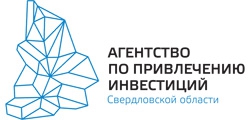In preparation for the celebration of the 77th anniversary of Victory in the Great Patriotic War, Roskartografiya has developed, based on cartographic materials of the Atlas of Battles of the Great Patriotic War of 1941-1945, individual layouts of art drawings (graffiti) about the stages of the liberation of Ukraine from the Nazis for use in the design of buildings and structures. The images contain fragments of a map dedicated to the liberation of left-bank Ukraine (the Battle for the Dnieper and Donbass), right-bank Ukraine (the Dnieper-Carpathian offensive) and a general view of the offensive against the Nazis in Ukraine.
Roscartography started creating an Atlas of the battles of the Great Patriotic War of 1941-1945 in 2019. When developing the atlas, archival and reference materials, photographs, as well as maps of the war years were used, which were created by employees of the Main Department of Geodesy and Cartography (GUGK) under the Council of People's Commissars of the USSR (Roscartography).
The liberation of Ukraine from the Fascist invaders took place in two stages. After the defeat at Kursk, the Nazi leadership tried to give the war a protracted, positional character. An important role in this was assigned to the Dnieper River line, where it was supposed to create an insurmountable defense. The battle for the Dnieper began with the offensive in the Donbass from August 13 by the troops of the Southwestern Front, and from August 18 by the Southern Front. On August 26, the Central, Voronezh and Steppe fronts struck the enemy.
The command of the fascists created the strongest grouping of troops in the Kiev direction. Here, at the end of 1943, the most fierce battles unfolded. The result was that on November 6, the troops of the 1st Ukrainian Front liberated the capital of Ukraine - the city of Kiev and then advanced to the west for 150 km. The enemy's attempt to retake the city was unsuccessful. The eastern rampart was hacked.
Simultaneously with the battles for Kiev, fierce battles were fought in the Kirovograd, Krivoy Rog directions and in Northern Tavria (the Lower Dnieper strategic offensive operation). In the unfolding battles, the troops of the 2nd, 3rd, 4th Ukrainian fronts eliminated the enemy's Zaporozhye bridgehead by mid-October, and by the end of the month liberated Zaporozhye, Dnepropetrovsk and Dneprodzerzhinsk.
The second stage of the battle for Ukraine was the Dnieper-Carpathian strategic offensive operation (liberation of Right—Bank Ukraine) - one of the largest operations of the Second World War. The offensive in Right-Bank Ukraine began with the counteroffensive of the 1st Ukrainian Front near Zhytomyr on December 24, 1943.
By the spring of 1944, the troops of four Ukrainian fronts had cracked the Fascist defenses all the way from Pripyat to the lower reaches of the Dnieper. Having advanced 150-250 km westward for two months, they defeated several large enemy groups and disrupted his plans to restore defense along the Dnieper. After the defeats suffered, the Nazi command no longer thought of offensive operations, but only sought to gain a foothold on the occupied lines and hold the front.
For the anniversary of the Great Victory, Roscartography has developed graffiti layouts for the liberation of Ukraine from Nazi invaders. The package contains images with three maps with the directions of front-line operations for the liberation of the left bank (the Battle for the Dnieper and Donbass) and right-bank Ukraine (the Dnieper-Carpathian offensive), as well as an overview map for the liberation of the entire territory of Ukraine. Materials can be used not only for the design of buildings and structures, but also for printing products. You can download the graffiti layout by following link.
Congratulations on the Great Victory Day!
A source: JSC«Roscartography»














